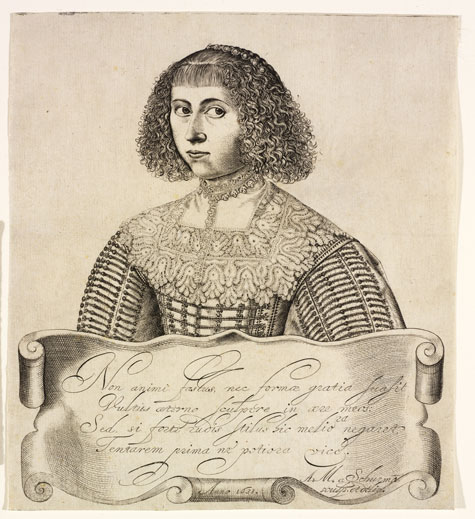 BOLD EXECUTION A self-portrait by van Schurman. |
The Renaissance of the 15th and 16th centuries didn't become known as the European age of rebirth for nothing. During these years, the first European paper mills opened, movable type was invented, linear perspective was conceived, and oil painting was developed. And in the 1430s, German goldsmiths invented engraving, as part of a European revolution in printing that spread knowledge (medicinal herbs, astronomy, engineering) as well as artists' fame.
"The Brilliant Line: Following the Early Modern Engraver, 1480-1650," organized by Emily Peters at the RISD Museum (224 Benefit Street, Providence, through January 3), is one of the best shows of the year because of the beauty of the 83 prints and the beautiful clarity with which it explains the development of the medium. Be sure to check out risdmuseum.org/thebrilliantline, which allows you to magnify selected prints and examine in detail how they were drawn via illustrations by Andrew Raftery, an engraver who teaches at RISD.
Engraving is a carving technique, like woodcuts, which had been produced in Japan as far back as the 8th century, and in Europe by 1400. In woodcuts, you carve away what will be white space, leaving the lines that will be printed. Engraving is the opposite; the artist's carved-out lines are printed by rubbing ink into the gouges and then running it through a press against wet paper. It allows more direct rendering. And the metal accommodates finer lines and details than wood.
The challenge was how to create rich tonal effects in a medium that is either black or white, without the soft shading of pencils or paint. One of the pioneers was the German Albrecht Dürer who, by the dawn of the 16th century, achieved a stunning fluidity in prints like Nemesis (also know as Large Fortune), depicting a nude winged woman perched atop an orb hovering over a river town. Dürer creates the illusion of volume by running his lines around the forms he's depicting. He layers lines atop each other in crosshatching to build tones. The shadow of a column is emphasized by drawing short lines between the long curves. He softens edges by letting shading lines trail off into little dashes.
.jpg)
STUNNING FLUIDITY Dürer’s The Large Horse. |
In Italy, Marcantonio Raimondi subsequently simplified this tonal system to quickly turn out reproductions of Raphael. Through the copyists (often commissioned by the original artists), painters' work became more widely known and collected. The difficulty of carving metal can make engravings awkward and stiff. Copyists are especially susceptible, losing the grace and fluidity of originals in faithful, but dull imitations.
Artists kept pushing. In the 1560s, Flemish engravers like Cornelis Cort began "swelling" their lines, varying the thickness of their strokes for greater subtlety of tone. The technique produces a calligraphic effect, that Dutch engraver Jan Harmensz Muller turns into a tour de force of swirling, sinewy lines in his Portrait of Hendrick Goltzius (c. 1617). Frenchman Claude Mellan eliminated most outlines and crosshatching in prints like Adam and Eve at the Foot of the Cross (c. 1647), letting the tones of his curling, calligraphic lines shape the figures. It anticipates Georges Seurat's crayon drawings of the 1880s (not here) in which lines disappear and his marks become a dark fog from which shapes emerge.